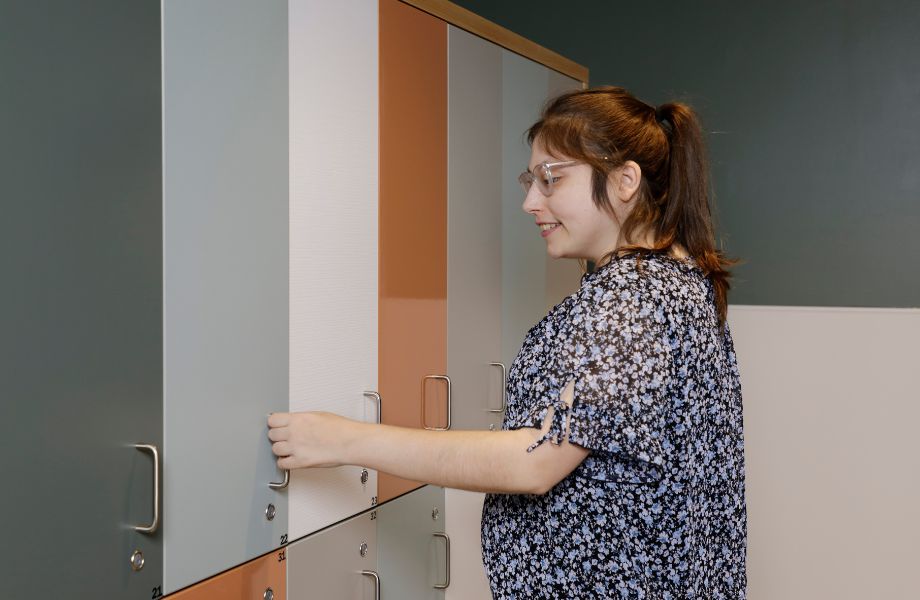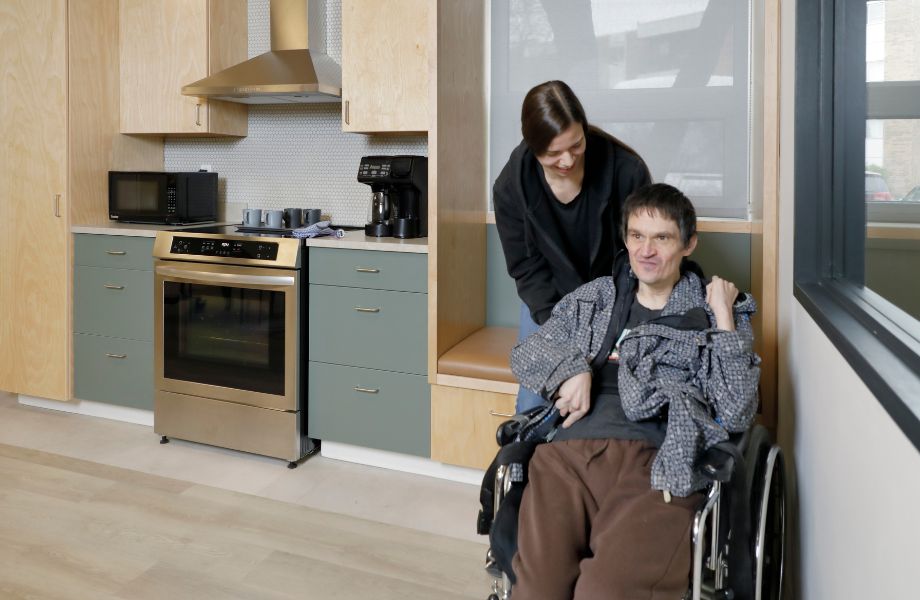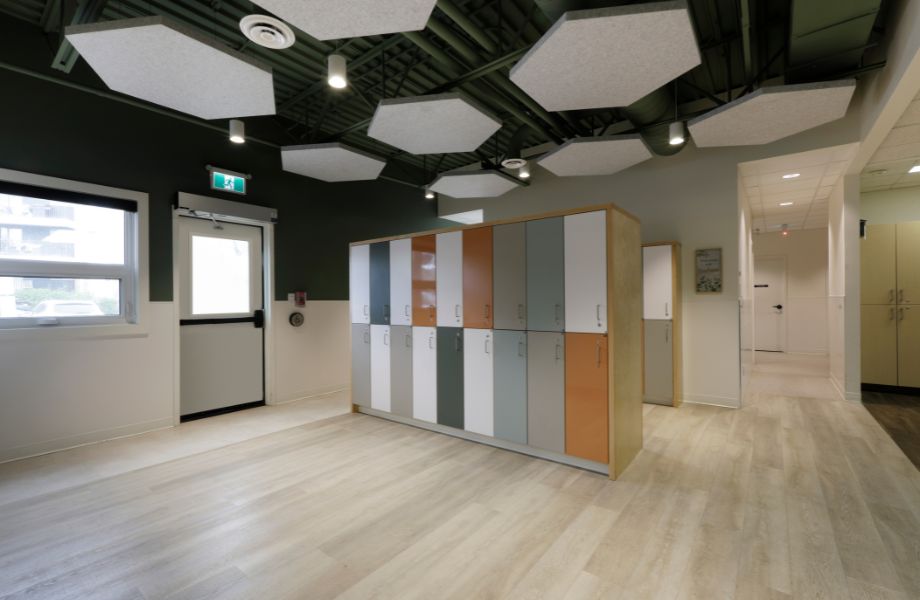A unique sensory design experience for people with intellectual disabilities
A unique sensory design experience for people with intellectual disabilities
Lockers in a wide range of colours and textures made with Formica® laminates.
People living with an intellectual disability generally have a high emotional quotient (EQ). They’re often keenly sensitive to their environment and greatly appreciate the beauty around them. That's why Wallace Klypak Architects Ltd. was commissioned to renovate several spaces at Light of the Prairies. Given that the organization's mission is to improve the lives of people living with intellectual disabilities, the architectural firm drew on a sense-focused design strategy.
The project involved partially renovating the Saskatoon organization's day program space, transforming a corridor originally comprising offices and restrooms into a series of universal toilets, a more client-friendly reception area, a locker area and an activity room with a coffee station.
The project's key goal was to improve the day-to-day experience of the day program's clients and staff, by providing users with new spaces that were both physically and cognitively accessible. Because Light of the Prairies' day program participants live with a range of intellectual disabilities, their understanding of the world around them can differ greatly from that of those who are “neurotypical” and from person to person.
Integral to the design strategy was the use of Formica® laminate to create an environment with strong environmental credentials. The design needed to be easy to move around in and promote interaction between people, without compromising on aesthetics and durability.


While the physical accessibility of spaces is often dictated by building codes and standards, cognitive accessibility is not usually considered when designing an environment. For Wallace Klypak Architects Ltd., this meant understanding how people with intellectual disabilities perceive their environments to create a place they would find easy to use and enjoy.

Transforming the locker area into a sensory experience
Rows of identical lockers that are indistinguishable from one another can be daunting for people who can't read numbers or signs or who have trouble counting. The design team therefore devised unique lockers, each with a distinct colour, pattern or texture, so that users could differentiate their locker from others around them using an alternative set of sensory cues.
A range of Formica® laminates were chosen to create these unique lockers, including Sculpted™ texture White (949), Gloss texture Earthenware (8241), Plex texture Fossil (5349), Matte texture Platinum (902), MicroDot™ texture Green Slate (8793).
While users can't necessarily identify which locker is theirs by its number, they can recognize it by its colour, the reflection of the light as it changes throughout the day, and the design and textures. As a result, the experience becomes interesting and sensory for them.
The durability of Formica® laminates was a key factor in choosing the materials for this project. As participants will be interacting with the surfaces of their new environment on many occasions, it was essential to choose materials that would withstand intensive use over time and be easy to clean.
Matte texture Green Slate (8793) laminate was also used in the activity room kitchenette.

.jpg?rev=d33ad6c82bd349bb940052e9f077abd9&cx=0&cy=0&cw=400&ch=500&hash=646F352C5A49F851F6D18AC38D87E702)

